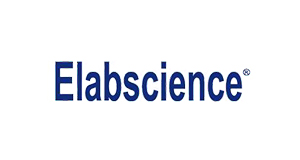Recombinant Human VEGF165 protein (His tag)
Recombinant Human VEGF165 protein (His tag)
SKU
ELSPDMH100127-100
Packaging Unit
100 µg
Manufacturer
Elabscience Biotechnology
Availability:
loading...
Price is loading...
Abbreviation: VEGF165
Target Synonym: Vascular endothelial growth factor A;VEGF-A;Vascular permeability factor;VPF;VEGFA;VEGF
Target Species: Human
Expression Host: HEK293 Cells
Fusion Tag: C-His
UNIProt ID: P15692
Background: Human VEGF121; also known as Vascular endothelial growth factor A; VEGFA; Vascular permeability factor; VPF and VEGF; is a homodimeric; heparin-binding glycoprotein which belongs to the platelet-derived growth factor (PDGF)/vascular endothelial growth factor (VEGF) family. VEGF-A is a glycosylated mitogen that specifically acts on endothelial cells and has various effects; including mediating increased vascular permeability; inducing angiogenesis; vasculogenesis; permeabilization of blood vessels and endothelial cell growth; increasing microvascular permeability; promoting cell migration and inhibiting apoptosis. Alternatively spliced transcript variants of VEGF-A encod either secreted or cell-associated isoforms. The lymphangiogenesis may be promoted by upregulation of VEGF121; which may in turn act in part via induction of VEGF-C. It binds to the FLT1/VEGFR1 and KDR/VEGFR2 receptors; heparan sulfate and heparin. NRP1/Neuropilin-1 binds isoforms VEGF-165 and VEGF-145. Isoform VEGF165B binds to KDR but does not activate downstream signaling pathways; does not activate angiogenesis and inhibits tumor growth.
Sequence: Met1-Arg191
Purity: > 95 % as determined by reducing SDS-PAGE.
Formulation: Lyophilized from sterile PBS, pH 7.4.
Normally 5 % - 8 % trehalose, mannitol and 0.01% Tween80 are added as protectants before lyophilization.
Please refer to the specific buffer information in the printed manual.
Endotoxin: Please contact us for more information.
Target Synonym: Vascular endothelial growth factor A;VEGF-A;Vascular permeability factor;VPF;VEGFA;VEGF
Target Species: Human
Expression Host: HEK293 Cells
Fusion Tag: C-His
UNIProt ID: P15692
Background: Human VEGF121; also known as Vascular endothelial growth factor A; VEGFA; Vascular permeability factor; VPF and VEGF; is a homodimeric; heparin-binding glycoprotein which belongs to the platelet-derived growth factor (PDGF)/vascular endothelial growth factor (VEGF) family. VEGF-A is a glycosylated mitogen that specifically acts on endothelial cells and has various effects; including mediating increased vascular permeability; inducing angiogenesis; vasculogenesis; permeabilization of blood vessels and endothelial cell growth; increasing microvascular permeability; promoting cell migration and inhibiting apoptosis. Alternatively spliced transcript variants of VEGF-A encod either secreted or cell-associated isoforms. The lymphangiogenesis may be promoted by upregulation of VEGF121; which may in turn act in part via induction of VEGF-C. It binds to the FLT1/VEGFR1 and KDR/VEGFR2 receptors; heparan sulfate and heparin. NRP1/Neuropilin-1 binds isoforms VEGF-165 and VEGF-145. Isoform VEGF165B binds to KDR but does not activate downstream signaling pathways; does not activate angiogenesis and inhibits tumor growth.
Sequence: Met1-Arg191
Purity: > 95 % as determined by reducing SDS-PAGE.
Formulation: Lyophilized from sterile PBS, pH 7.4.
Normally 5 % - 8 % trehalose, mannitol and 0.01% Tween80 are added as protectants before lyophilization.
Please refer to the specific buffer information in the printed manual.
Endotoxin: Please contact us for more information.

 Deutsch
Deutsch










